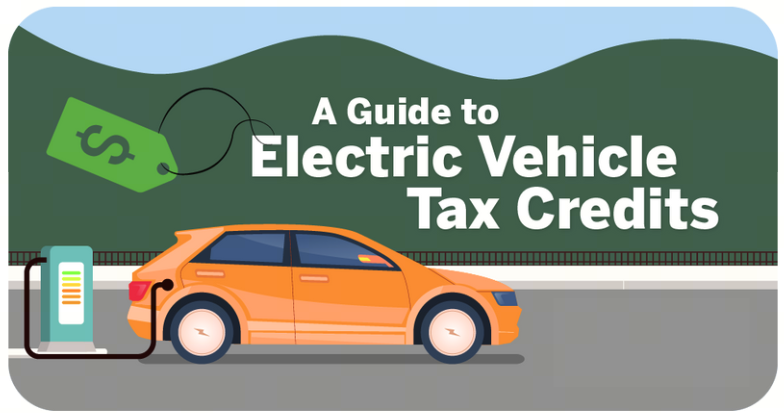
In this guide, we'll explore everything you need to know about used electric car tax credits, including eligibility requirements, how much you can save, and key changes for 2025.
What is the Used Electric Car Tax Credit?
The used electric car tax credit is a financial incentive that provides a reduction in your federal tax liability when you purchase a qualified used EV. This program is part of the federal government's efforts to make electric vehicles more affordable and reduce the carbon footprint of the transportation sector.
Key Benefits of the Used Electric Car Tax Credit
- Save Money: The tax credit can lower the purchase price of a used electric vehicle.
- Environmental Impact: By purchasing an EV, you help reduce greenhouse gas emissions.
- Eligibility for Lower-Income Buyers: The program is designed to make EVs more accessible to a wider range of consumers, especially those with lower incomes.
Who Qualifies for the Used Electric Car Tax Credit?
Not everyone is eligible for the used electric car tax credit. To take advantage of this incentive, certain requirements must be met by both the buyer and the vehicle. Here’s a breakdown of the key eligibility criteria:
Eligibility Criteria for Buyers
- Income Limits: Buyers must have an adjusted gross income (AGI) below a certain threshold. In 2025, the limit is set at $75,000 for individuals and $150,000 for joint filers.
- Purchase Date: The vehicle must be purchased from a dealership, and it must be a used EV that is at least 2 years old.
- U.S. Residency: The buyer must be a U.S. citizen or resident.
Eligibility Criteria for Vehicles
- Age of the Vehicle: The EV must be at least 2 years old at the time of purchase.
- Purchase Price Limit: The vehicle's purchase price cannot exceed $25,000.
- Battery Capacity: The vehicle must have a battery with a capacity of at least 7 kWh.
- Qualified Vehicles: Only specific electric vehicle models that meet federal standards are eligible.
How Much Can You Save with the Used Electric Car Tax Credit?
The amount you can save depends on several factors, including the purchase price of the vehicle and your tax liability. Here’s how the credit works in 2025:
Used Electric Car Tax Credit Amount
- The credit can be up to $4,000, or 30% of the vehicle's price, whichever is lower. This means that if you purchase a used EV for $15,000, you could receive a tax credit of $4,000, but if the car costs $25,000, the credit would be limited to $4,000.
Example Scenarios
| Vehicle Price | Credit Percentage | Maximum Credit | Credit You Receive |
|---|---|---|---|
| $15,000 | 30% | $4,000 | $4,000 |
| $25,000 | 30% | $4,000 | $4,000 |
| $12,000 | 30% | $4,000 | $3,600 |
| $20,000 | 30% | $4,000 | $4,000 |
Impact on Your Tax Liability
Keep in mind that the used electric car tax credit is non-refundable. This means that it can reduce your federal tax liability, but you won’t receive a refund if the credit exceeds the amount you owe in taxes. For example, if you qualify for a $4,000 credit but only owe $3,000 in taxes, you'll receive a $3,000 reduction in your tax bill.
How to Claim the Used Electric Car Tax Credit
Claiming the used electric car tax credit is a straightforward process, but you’ll need to make sure you follow the right steps to ensure you get the maximum benefit. Here’s a guide on how to claim your credit:
1. Ensure Eligibility
Make sure the vehicle you purchase meets the requirements, such as being at least two years old, having a purchase price below $25,000, and being an eligible electric vehicle.
2. File the Necessary Tax Forms
To claim the credit, you will need to complete IRS Form 8834, which is specifically for the qualified plug-in electric drive motor vehicle credit. Attach the form to your federal tax return.
3. Documentation
Keep all purchase documents, including the bill of sale, vehicle identification number (VIN), and proof of payment. The IRS may require additional documentation to verify the eligibility of your used EV.
What Changes Are Expected for 2025?
The used electric car tax credit is part of the federal government’s ongoing efforts to promote the adoption of electric vehicles. For 2025, several updates are expected to impact the program:
Expanded Vehicle Eligibility
In 2025, the types of electric vehicles eligible for the tax credit may expand to include a broader range of models, allowing more consumers to take advantage of this incentive.
Higher Tax Credit Amounts
There may be proposals for increasing the maximum tax credit available, allowing for higher savings for used EV buyers.
Conclusion: Is the Used Electric Car Tax Credit Worth It?
The used electric car tax credit is an excellent incentive for those looking to make the switch to an electric vehicle without breaking the bank. With a maximum credit of $4,000 and eligibility for lower-income buyers, this program is designed to make EV ownership more affordable and accessible in 2025.
If you’re planning to purchase a used electric car, make sure to check your eligibility, understand the credit’s benefits, and follow the necessary steps to claim the tax credit. By doing so, you can significantly reduce the overall cost of your used EV while contributing to a more sustainable future.
Chart: Savings Breakdown with the Used Electric Car Tax Credit
| Vehicle Price | Credit | Final Price After Credit |
|---|---|---|
| $15,000 | $4,000 | $11,000 |
| $20,000 | $4,000 | $16,000 |
| $25,000 | $4,000 | $21,000 |
| $10,000 | $3,000 | $7,000 |
Whether you're a first-time electric car buyer or looking to upgrade to a used EV, the used electric car tax credit is a powerful incentive that can make the transition to greener transportation more affordable. Make sure to explore this option in 2025 to take advantage of savings on your next vehicle purchase!



